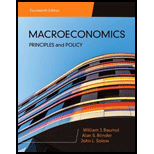Consider a closed economy in which the population grows at the rate of 2% per year. The per-worker production function is given as: y = 10/k, where y is output per worker and k is capital per worker. The depreciation rate of capital is 73.00% per year. Suppose that households consume 70% of income and save the remaining 30%. There is no government. (Enter all responses as integers or decimals rounded to one place as appropriate.) What is the steady-state value of capital per worker? k = What is the steady-state value of output per worker? y = What is the steady-state value of consumption per worker? c = What is the steady-state value of investment per worker? i= Suppose that the economy now wanted to increase its steady-state level of output per worker. If the economy wanted to double the level of output per worker (from 40 to 80), what is the level of capital per worker, k, needed? What fraction of income would households have to save in order to increase the level of capital per worker to achieve this increase in output? (Enter your response as a decimal rounded up to three places as appropriate).
Consider a closed economy in which the population grows at the rate of 2% per year. The per-worker production function is given as: y = 10/k, where y is output per worker and k is capital per worker. The depreciation rate of capital is 73.00% per year. Suppose that households consume 70% of income and save the remaining 30%. There is no government. (Enter all responses as integers or decimals rounded to one place as appropriate.) What is the steady-state value of capital per worker? k = What is the steady-state value of output per worker? y = What is the steady-state value of consumption per worker? c = What is the steady-state value of investment per worker? i= Suppose that the economy now wanted to increase its steady-state level of output per worker. If the economy wanted to double the level of output per worker (from 40 to 80), what is the level of capital per worker, k, needed? What fraction of income would households have to save in order to increase the level of capital per worker to achieve this increase in output? (Enter your response as a decimal rounded up to three places as appropriate).
Chapter16: Economic Growth
Section: Chapter Questions
Problem 2E
Related questions
Question
6

Transcribed Image Text:Consider a closed economy in which the population grows at the rate of 2% per year. The per-worker production function is given as:
y = 10/k,
%3D
where y is output per worker and k is capital per worker. The depreciation rate of capital is 73.00% per year.
Suppose that households consume 70% of income and save the remaining 30%. There is no government. (Enter all responses as integers or decimals rounded to one place as appropriate.)
What is the steady-state value of capital per worker? k =
What is the steady-state value of output per worker? y =
What is the steady-state value of consumption per worker? c =
What is the steady-state value of investment per worker? i=
Suppose that the economy now wanted to increase its steady-state level of output per worker.
If the economy wanted to double the level of output per worker (from 40 to 80), what is the level of capital per worker, k, needed?
What fraction of income would households have to save in order to increase the level of capital per worker to achieve this increase in output?
(Enter your response as a decimal rounded up to three
places as appropriate).
Expert Solution
This question has been solved!
Explore an expertly crafted, step-by-step solution for a thorough understanding of key concepts.
This is a popular solution!
Trending now
This is a popular solution!
Step by step
Solved in 2 steps with 1 images

Knowledge Booster
Learn more about
Need a deep-dive on the concept behind this application? Look no further. Learn more about this topic, economics and related others by exploring similar questions and additional content below.Recommended textbooks for you


Managerial Economics: A Problem Solving Approach
Economics
ISBN:
9781337106665
Author:
Luke M. Froeb, Brian T. McCann, Michael R. Ward, Mike Shor
Publisher:
Cengage Learning

Economics (MindTap Course List)
Economics
ISBN:
9781337617383
Author:
Roger A. Arnold
Publisher:
Cengage Learning


Managerial Economics: A Problem Solving Approach
Economics
ISBN:
9781337106665
Author:
Luke M. Froeb, Brian T. McCann, Michael R. Ward, Mike Shor
Publisher:
Cengage Learning

Economics (MindTap Course List)
Economics
ISBN:
9781337617383
Author:
Roger A. Arnold
Publisher:
Cengage Learning


Principles of Economics 2e
Economics
ISBN:
9781947172364
Author:
Steven A. Greenlaw; David Shapiro
Publisher:
OpenStax
